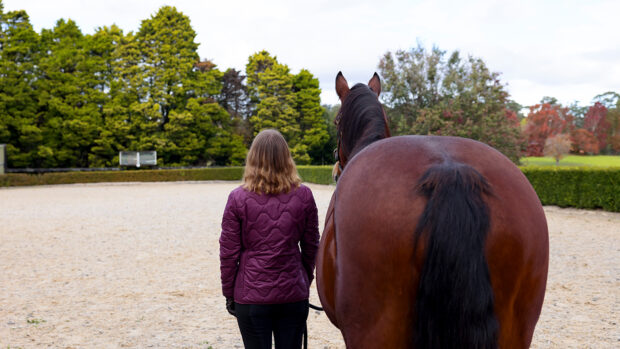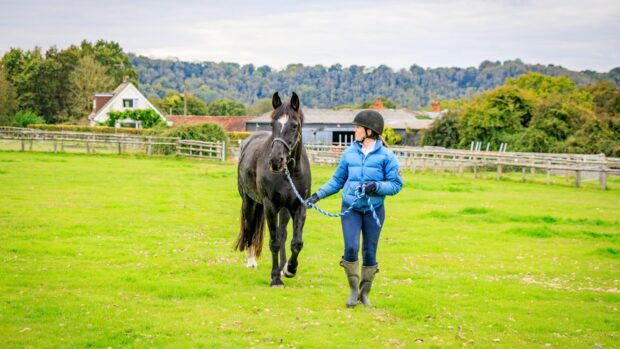Horses that won’t tie up can be exasperating and dangerous. For safety’s sake, you need a deliberate breaking point between the horse and the tying-up ring — but that becomes the weakest link in more ways than one as the horse learns how easy it is to pull back and escape.
Lucia Carvosso, who worked in several eventing yards before setting up as a freelance groom and clipper, says that an old tail bandage can provide a solution.
“It’s a trick I picked up from someone who used to work for Pippa Funnell,” she says. “Instead of fastening string to the tying-up ring, tie a tail bandage in a big loop and tie your lead rope to that.
“Horses which pull back and break away aren’t usually naughty. They frighten themselves because they meet what they think is an immovable object and when it suddenly breaks, they throw their heads up and get even more worried by the rope flying up.
“A bandage has enough ‘give’ to persuade most horses that they are being asked to stand still rather than forced; after all, most stand with a handler.”
Other popular methods based on the same idea include tying the lead rope to an inner tube, but these will often bear a dangerous amount of pressure. They can also be stretched so taut that if they do snap, the whip-like effect can cause serious injuries.
At Jennie Loriston-Clarke’s Catherston Stud, foals get their first lessons in tying up via a lunge line clipped to the headcollar and passed through a ring in the stable wall and back to the handler.
A careful handler can give and take — rather like playing a fish on a line — to teach the youngster to accept restriction without forcing or frightening him. Early sessions last only a couple of minutes.
Jane Dawson, who specialises in importing and producing Irish sports horses, finds that they often lack basic manners. She went on a groundwork course with trainer and remedial specialist Richard Maxwell and found this helped with horses who would not tie up.
“When they learn that if they step forward into pressure, it releases, they will usually automatically step forward as soon as they pull back on a headcollar,” she says.
“I use a pressure halter for groundwork in-hand, but you should never use this or any other sort of controller headcollar to tie up a horse, either on the yard or when travelling — if he does panic instead of giving, the pressure tightens until the safety string at the ring breaks.
“Also, a lot of people use baler twine as their safety loop. While it will break, it takes a long time and some twine is particularly strong. Personally, I think thick garden twine is safer.”



